Oslo is the capital of Norway, but more importantly, it’s also Stéphanie’s birth town.
As a dynamic, creative, inspired city, Oslo is great to visit any time of year. Facing the fjord and surrounded by forest-clad hills, it’s the ideal destination for nature lovers.
Oslo is a city in motion – it’s undergone massive changes and evolved enormously in the last few years. Entire neighborhoods – such as Bjørvika, around the Opera house – have been created. There are plenty of parks, gardens, and tree-lined avenues, making it a uniquely green city, where nature is easily accessible all over town.
Oslo isn’t a cold city, neither literally, nor figuratively. On the contrary, it’s welcoming and conducive to interesting architectural, artistic, cultural, and personal discoveries.
In the summer, the locals flock to the seaside to lounge on the beach, unwind in a floating sauna, or take a dip in the sea. In the winter, the shorter days are better suited for visiting a museum or an exhibit, or finding a nice café, bar, or restaurant where you can enjoy the koselig (pronounced “kooshlee”) atmosphere. The notion of koselig can be defined as a warm, pleasant, cozy feeling. It could be created by soft and comfortable interior that makes you want to wrap yourself up in a blanket, an intimate get-together with friends in the summer, or a lovely hot drink in the winter.
We’ve selected 4 Oslo neighborhoods that we particularly enjoy. The idea is to take in the general atmosphere of an area, rather than point out very specific (more or less touristy) sights.
Bjørvika
The construction of the Opera house by the Oslo fjord was the first step in transforming the old harbor district of Bjørvika into a vibrant new neighborhood.
Designed by Norwegian architecture company Snøhetta, the Opera, with its white marble roof, seems almost to emerge from the cool waters of the fjord. Don’t miss the atrium inside the building (a harmonious composition of wood, metal, and glass), and particularly the roof of the Opera house, to enjoy the splendid view of the Oslo fjord
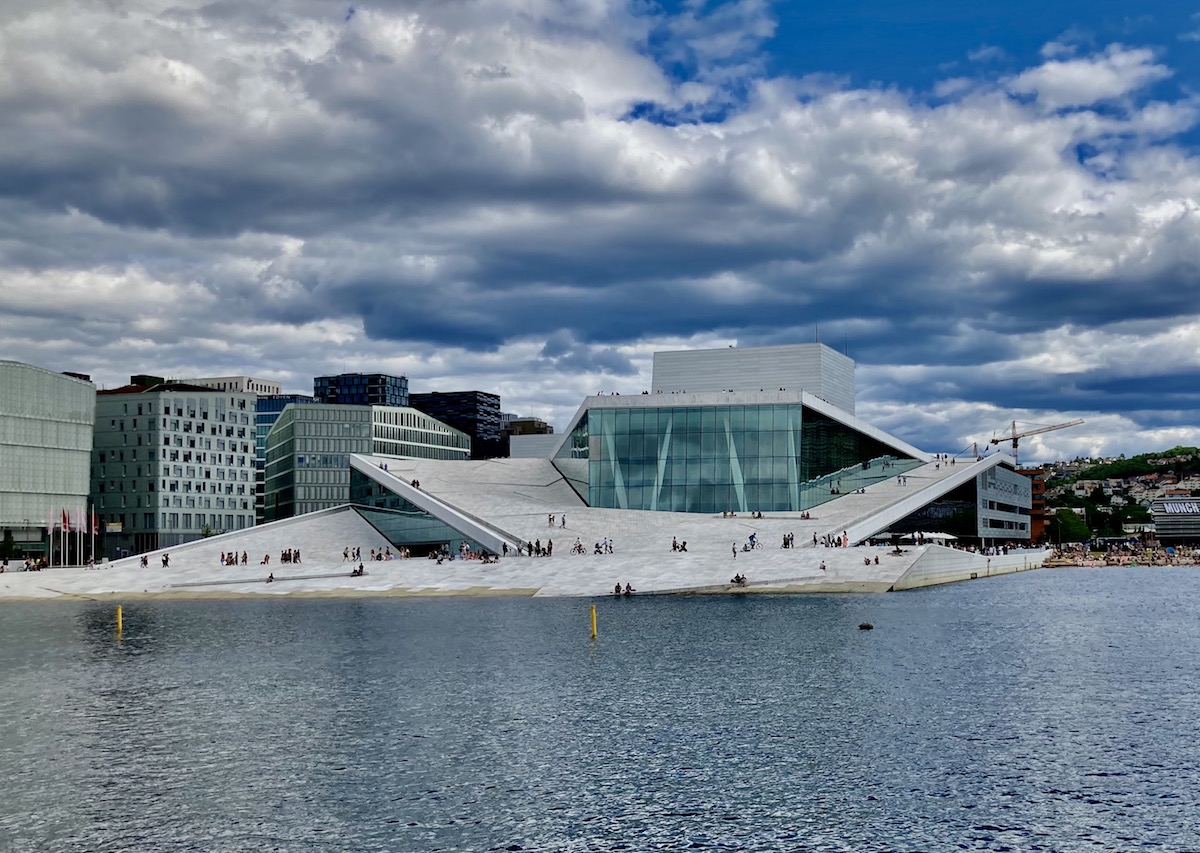

Take a stroll along Langkaia dock (to the east, across from the Opera) to observe the unique architecture of the building in detail. The dock will lead you to SALT, an open-air cultural space combining, art, music, street food, architecture, and saunas.
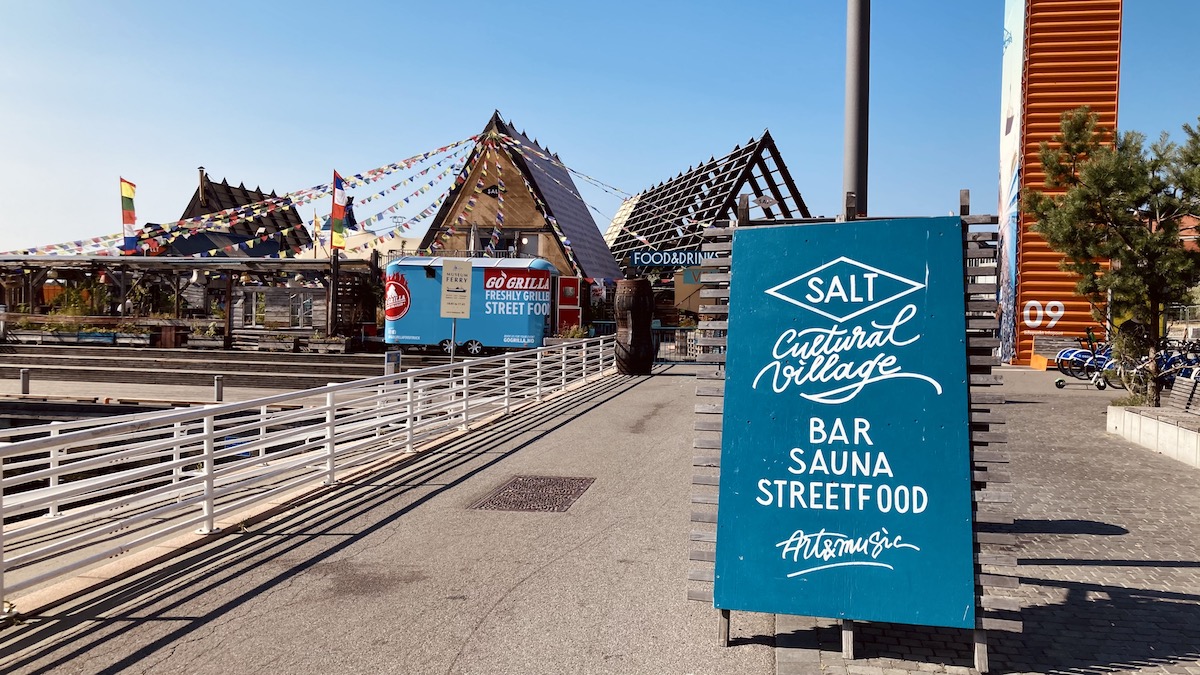
The Deichman Public Library (to the north, across from the Opera) was conceived as a modern-day multimedia library and as a shared, living space. It contains a vast collection of works organized by genre over 5 floors. The building’s many couches and chairs make it the perfect place to study or relax. Mini movie rooms are set up for private showings, and there are fun activities for kids. There’s even a dedicated space for 3D printing! The café terrace above the library entrance also offers an ideal view of the Opera house. The Deichman Library was recently named the world’s best new public library by the International Federation of Library Associations and Institutions.
Between the Opera and the new Munch Museum, a floating footbridge allows pedestrians to walk to the tip of Sørenga – a new neighborhood that’s been built on the water, where young Oslo-dwellers and families alike meet up to enjoy beautiful summer days.

A collection of buildings called the Barcode Project and the façade of the Munch Museum make up Oslo’s new skyline.
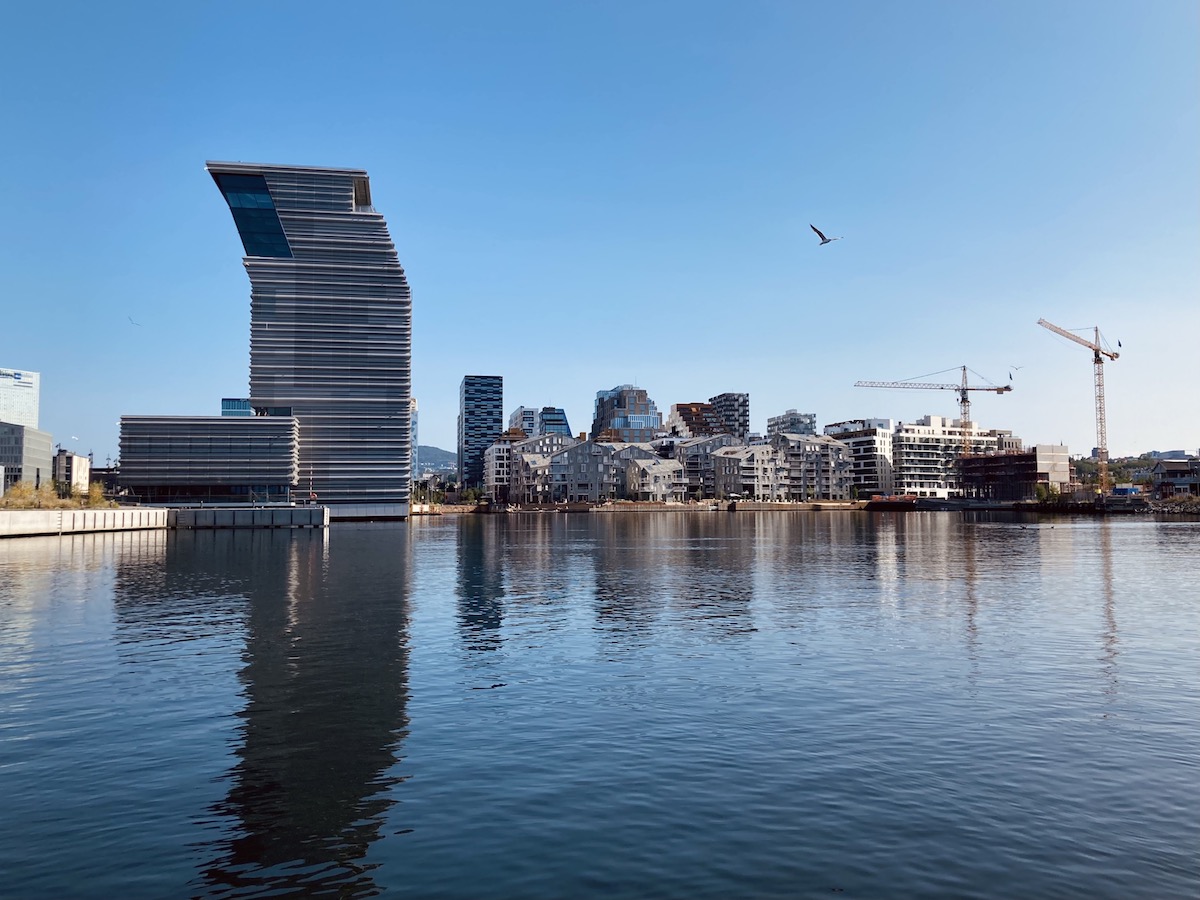

The view from Akrobaten footbridge, which spans the railway, perfectly illustrates the barcode effect of the architecture. Thanks to the multitude of cafés, bars, and restaurants located on the ground floor of the buildings, it’s become a very lively area.
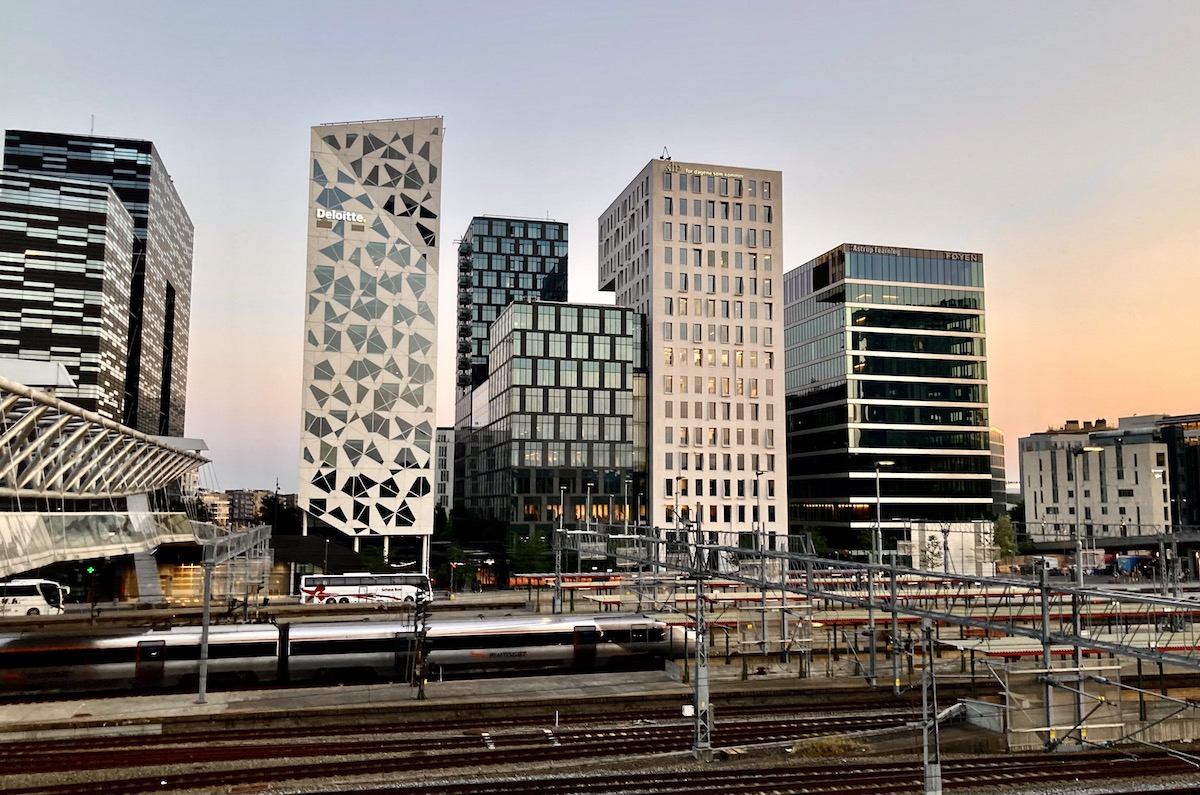

Along the waterfront, several saunas, beaches, and pontoons attract those who want to bathe, relax, and enjoy the fjord.


Aker Brygge, Tjuvholmen and Akershus Fortress
The pedestrian docks at Aker Brygge offer a completely open view of the fjord, Akershus Fortress, and City Hall. The docks are lined with shops and restaurants that are particularly popular with tourists. Aker Brygge is also the point of departure for the little yellow ferries going out to the Bygdøy peninsula, or for fjord cruises.
For future reference: the new National Museum, which will open in 2022, is located by Aker Brygge.



Extend your stroll along the boardwalk at Aker Brygge by continuing out to the Tjuvholmen peninsula, where you will find the Astrup-Fearnley Museum of Modern Art (designed by architect Renzo Piano), a sculpture park (with pieces by artists such as Louise Bourgeois and Anish Kapoor). The clean-cut architecture of the museum and the surrounding buildings give Tjuvholmen its unique character.

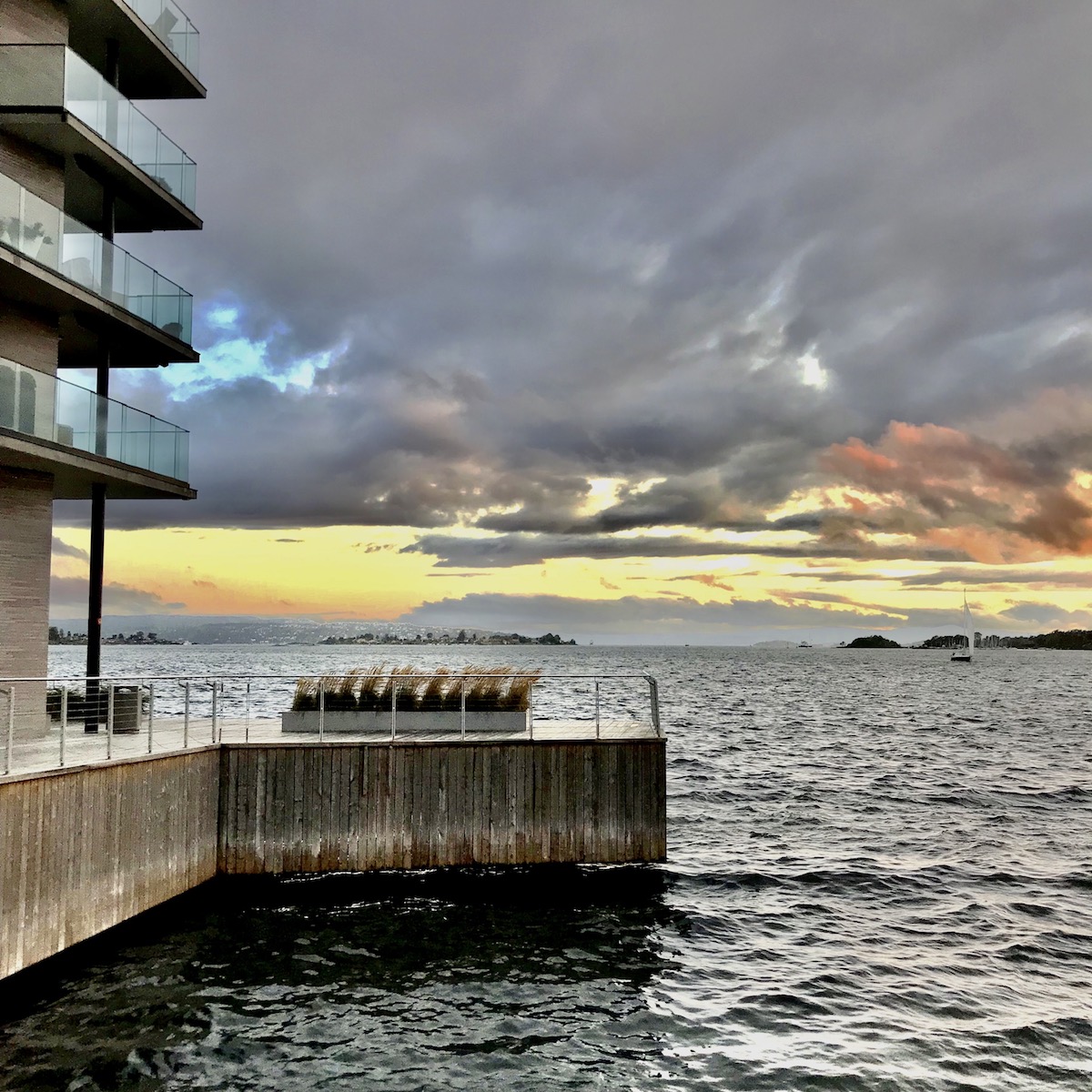
Akershus Fortress was built around a medieval castle inthe 17th century. This massive, steep citadel with paved pathways is home to several museums (The Armed Forces Museum, The Norwegian Resistance Museum, and Akershus medieval castle) and offers a splendid view of Oslo harbor.


Grünerløkka and Vulkan
Exploring Grünerløkka on foot is the best way to soak up the vibe of this bustling neighborhood. “Løkka” (pronounced “luh-ka”), as it’s affectionately called, is dotted with vintage and design shops, secondhand stores, koselig little cafés and restaurants, concert venues and bars, large squares, and lush parks. The area is popular with students, young families, and pensioners alike.
At the edge of Grünerløkka, in the Sagene area, a walk along the Akerselva river will reveal a string of converted brick factory buildings, waterfalls, and green spaces.

The new Vulkan neighborhood is also located by the bank of Akerselva, with Mathallen, a food court and indoor market concept, as its main attraction. Various shops and stalls sell culinary products and dishes from all over the world (Norway, Mexico, Japan, France, Hungary, China, Italy…) that you can then enjoy outside or in the common seating area in the middle of the market.
Our tip: near Mathallen, you can explore the little side streets and alleys around legendary café-bar Blå, where you’ll discover a unique, handmade outdoor chandelier, as well as many street-art pieces.
The old tree houses in Telthusbakken and Damstredet can be reached on foot from Vulkan, where they’re hanging on to the hillside in the St. Hanshaugen (St. John’s Hill) district, near Gamle Aker Kirke (Oslo’s oldest church, built in 1100) and Vår Frelsers Gravlund cemetery (where a great many famous Norwegians are buried, such as playwright Henrik Ibsen and painter Edvard Munch).
Telthusbakken and Damstredet are both quiet and very instagrammable streets with 19th-century houses.
Telthusbakken is lined with colorful, wooden houses on one side, and with community gardens on the other. At the top of Telthusbakken, it’s worth stopping a while to enjoy the view of the east side of Oslo.
The quaint old houses that line both sides of Damstredet all have lush little gardens. The great Norwegian poet Henrik Wergeland lived in the pink house by the top of Damstredet for a few years.
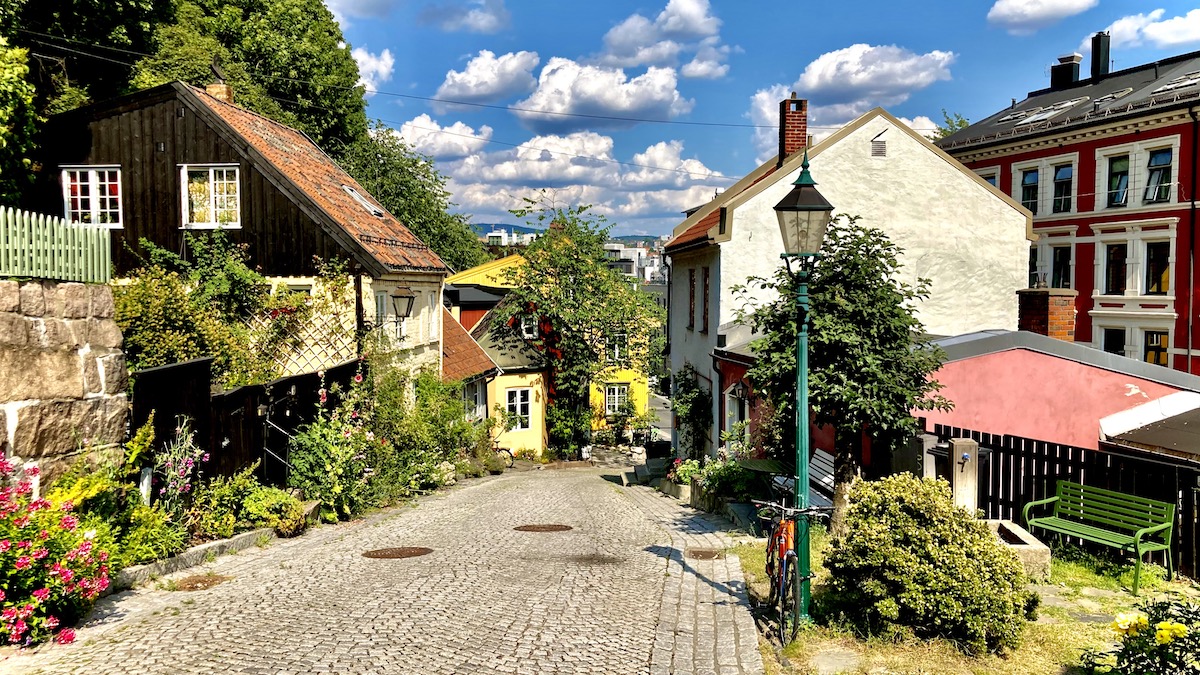
Frogner, the Vigeland park and the Royal Palace
Frogner is the capital’s calm and affluent embassy neighborhood, nestled between the Royal Palace and the Vigeland park.
Our tip: explore the different streets in the area (such as Oscars gate, Frognerveien, Gyldenløves gate and Inkognitogata) and admire the beautiful villas and 19th-century apartment buildings, relax in a café, or take a walk in a park.
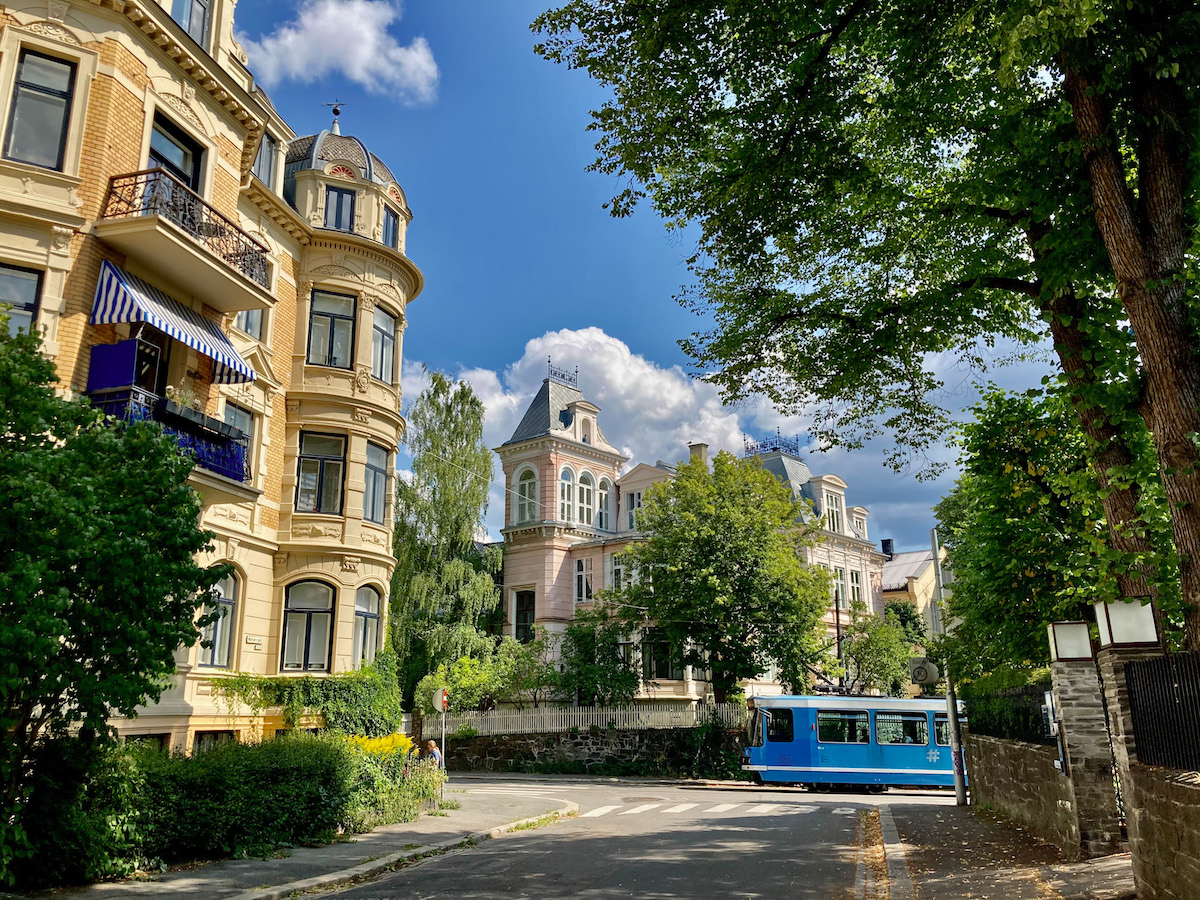
The Vigeland park is one of Oslo’s most popular spotsfor locals and tourists alike. More than 200 sculptures made by artist Gustav Vigeland between 1920 et 1943 can be found all over this massive park, which was created on farmland in the early 20th century. Most of the sculptures are nudes representing the different ages of life, the most famous of which are the Monolith, the great central fountain, and “Sinnataggen” (Angry Boy). The park also has playgrounds, tennis courts, two museums (the Vigeland Museum and Oslo City Museum), cafés, a stadium, and a public pool. A large number of benches and greens make it the perfect place for a picnic.
The Royal Palace, which was built in the neo-classical style and finished in 1849, has been the main residence of the Norwegian royal family since the country gained its independence in 1905. It’s easily recognizable by its yellow façade and its ornate balcony with six Ionian columns. While the Palace square is one of Oslo’s must-see sights, the Royal Palace is only open to the public in the summer months. It is possible to watch the changing of the guards (every day at 13:30).
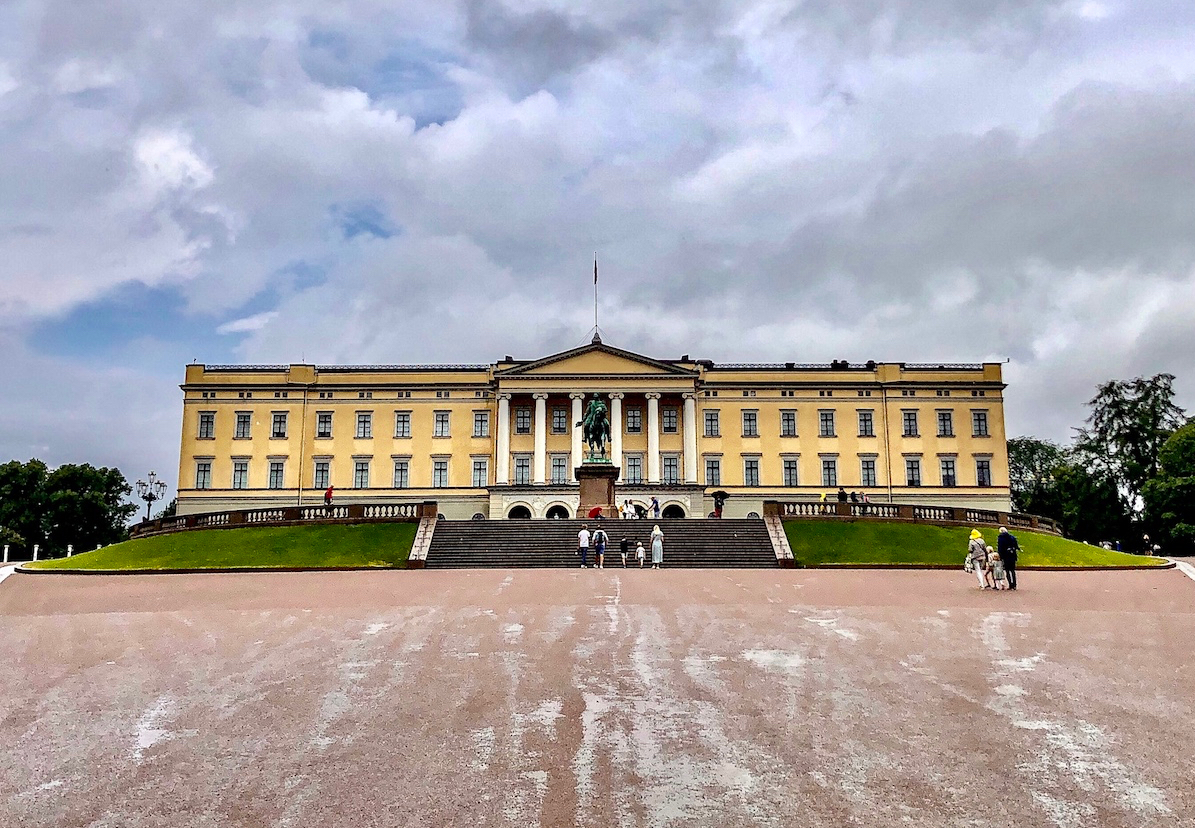
A majestic statue of King Karl-Johan of Sweden-Norway (born Jean-Baptiste Bernadotte in the French town of Pau) towers over the Palace square.
The Palace is located at the west end of de Karl Johans Gate (Oslo’s main shopping street), and is surrounded by the large, beautiful park of Slottsparken.
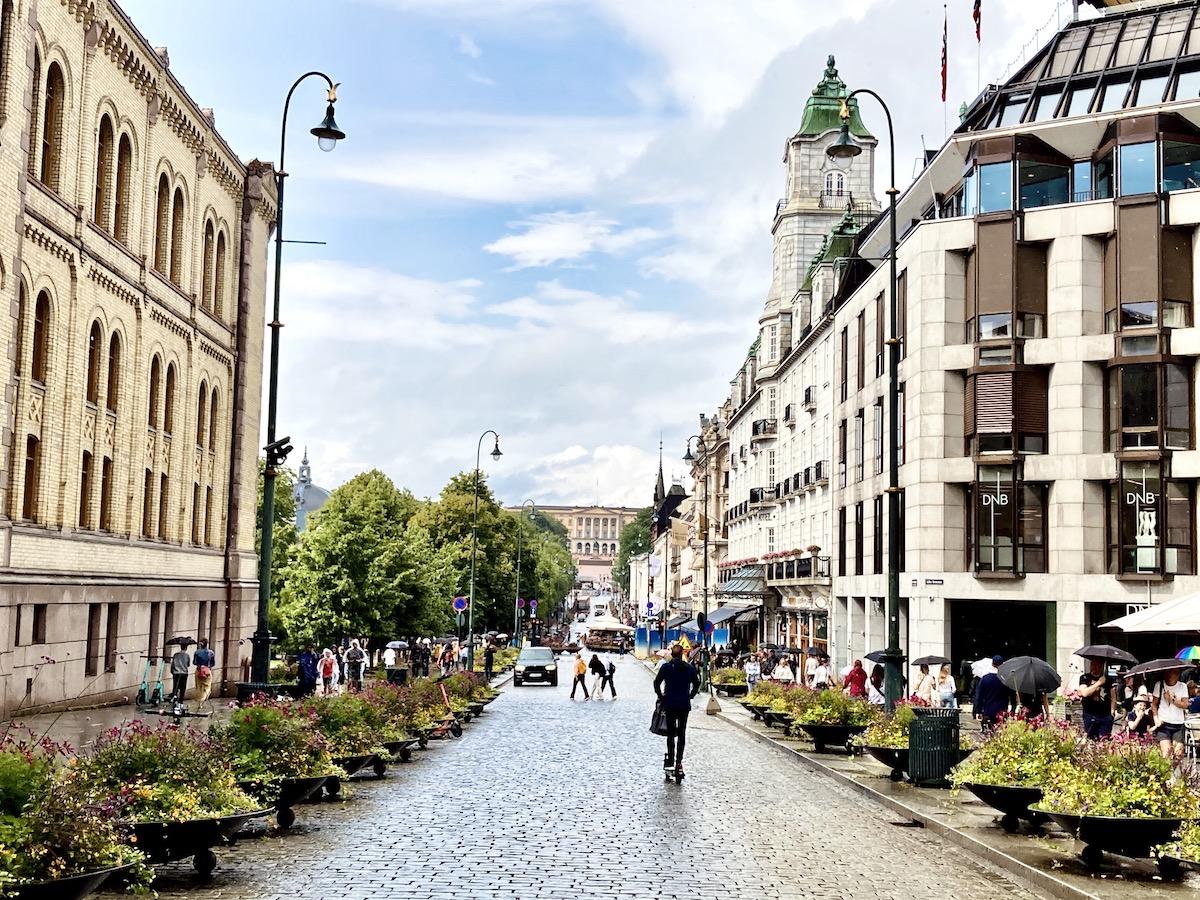
Continue exploring…
• Bygdøy is a large peninsula with bucolic and woodland views, elegant villas, marinas, seaside walks and several museums (such as the Fram Museum, dedicated to polar explorers, and the open-air Norwegian Folk Museum, which contains a collection of traditional Norwegian houses, as well as a magnificent stave church).
• The hills around Oslo, particularly Holmenkollen, with its famous ski jump
• The panoramic view of the city from Ekeberg sculpture park
• The old wooden houses of Kampen and Vålerenga
• The façade of the parliament building, Stortinget (Eidsvolls plass)
• Oslo City Hall (a carillon tune is played every first Wednesday of the month at 11 AM). It’s possible to visit the inside of the building
• The inside of Oslo Cathedral
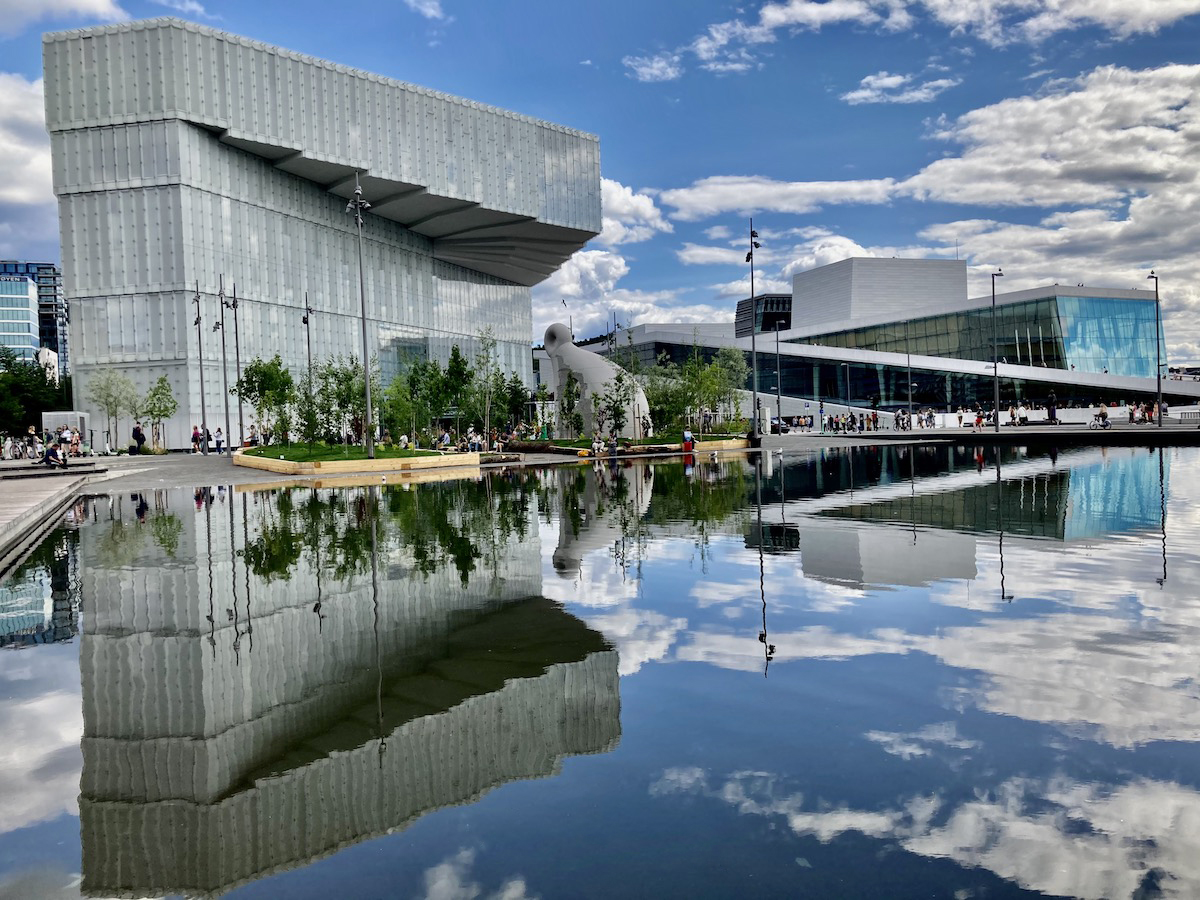

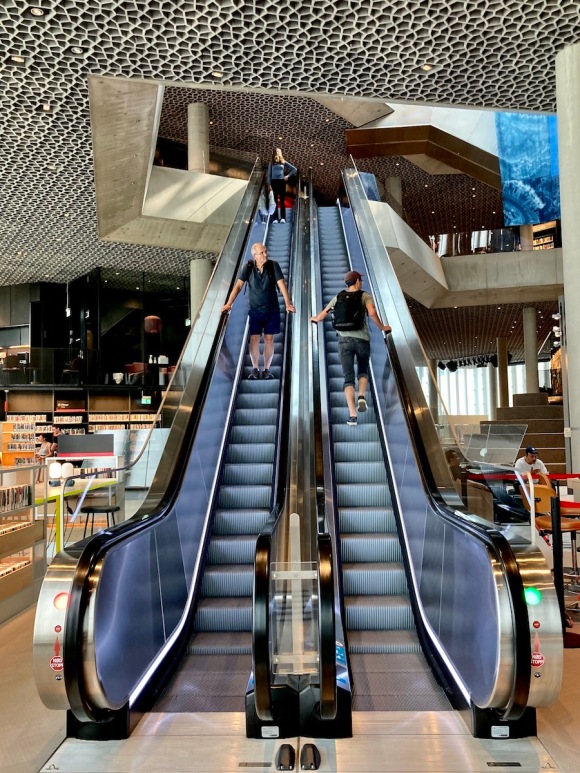


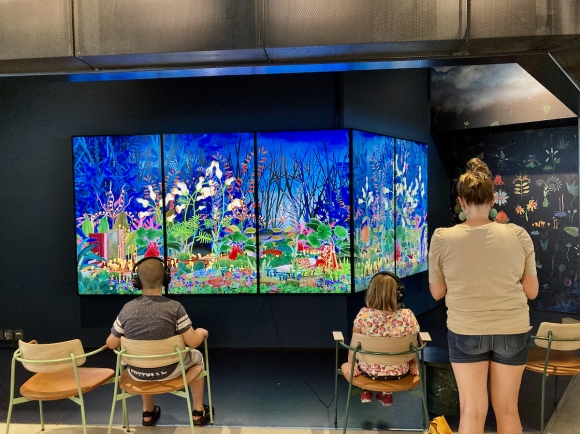




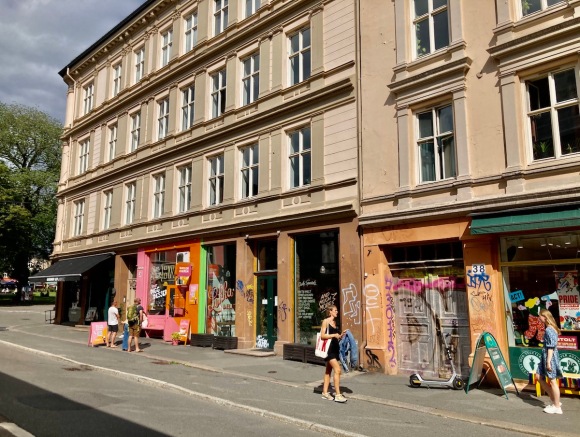




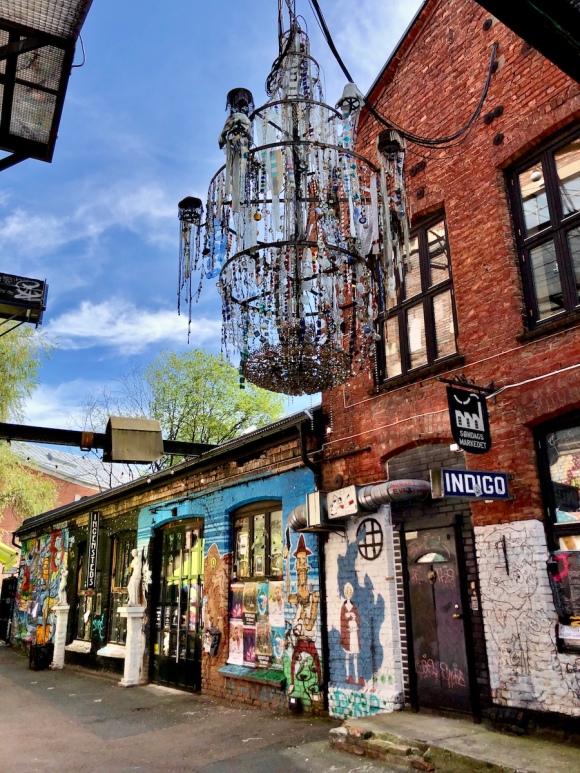
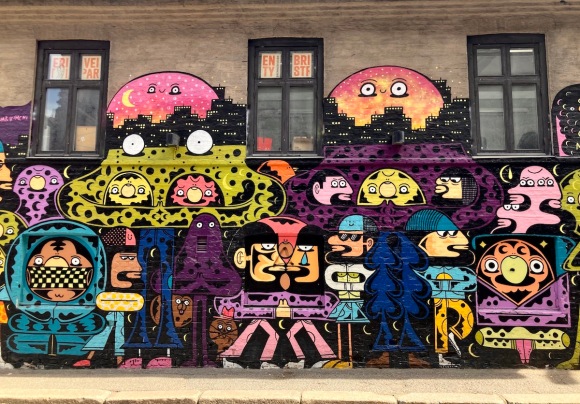

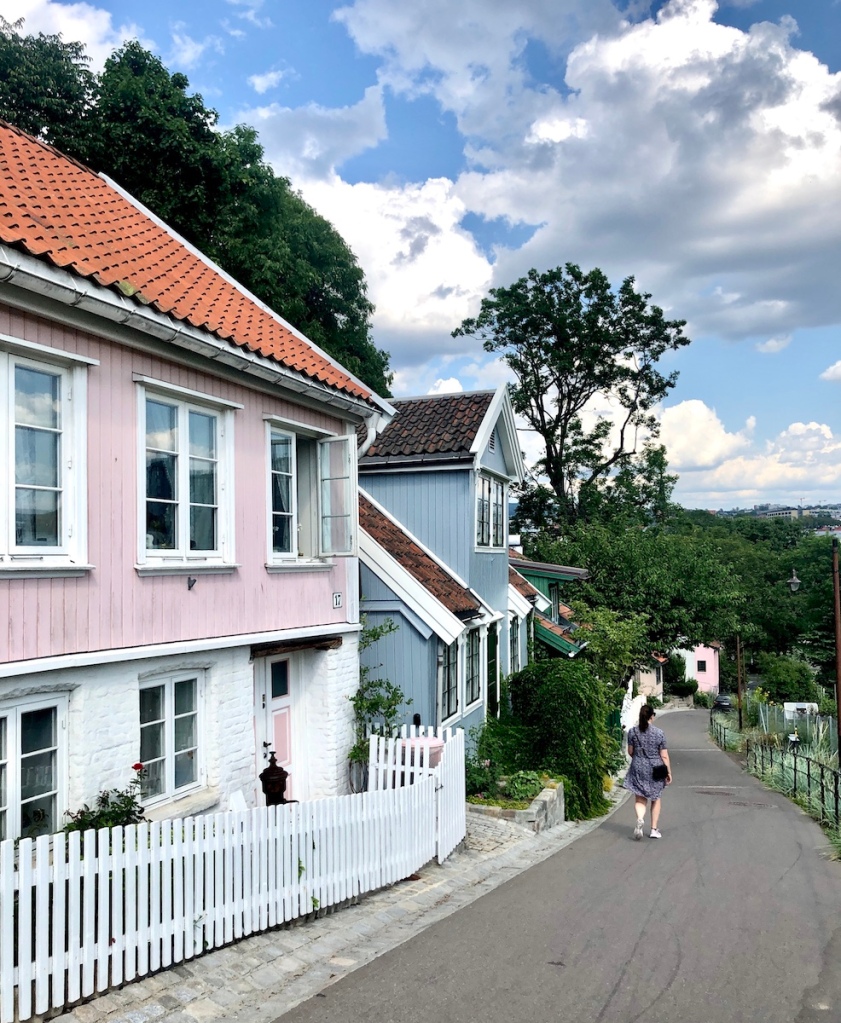

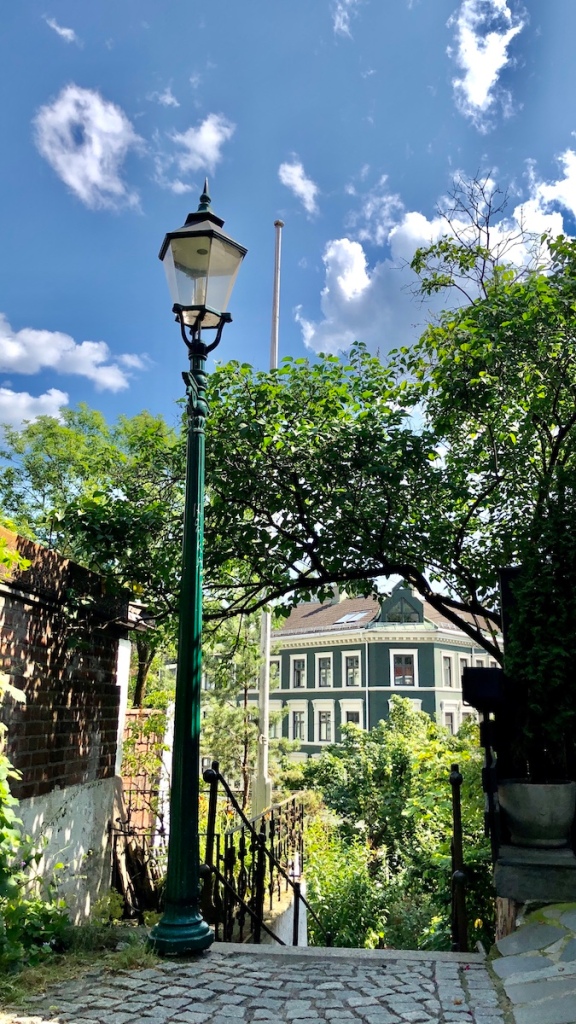

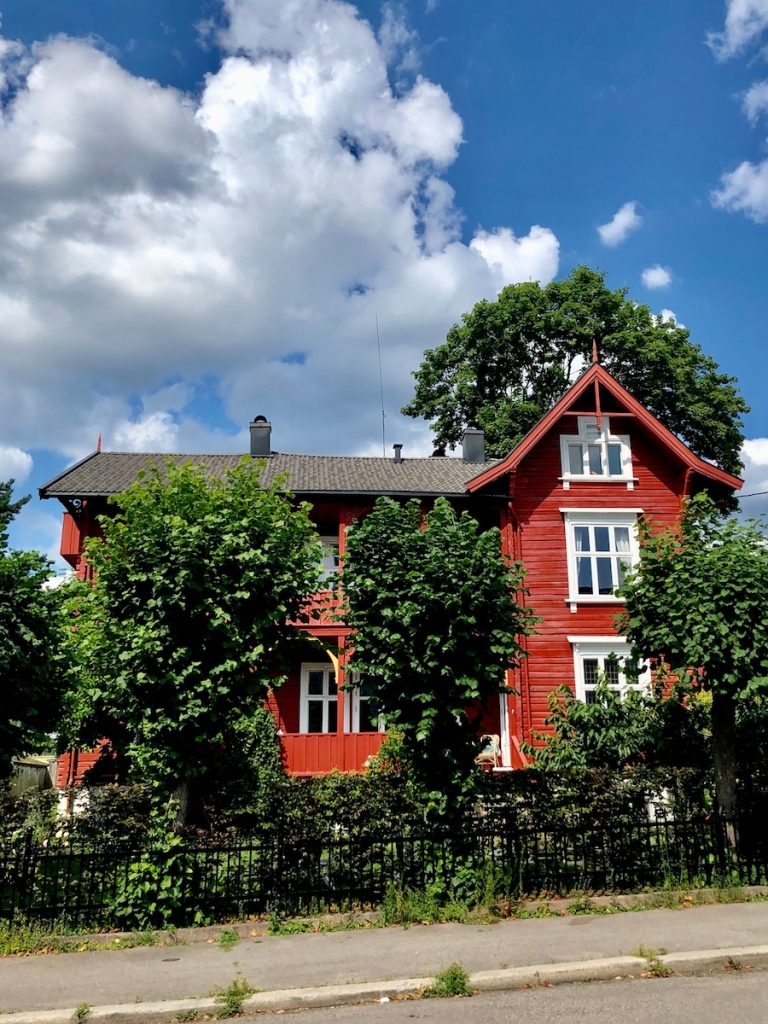
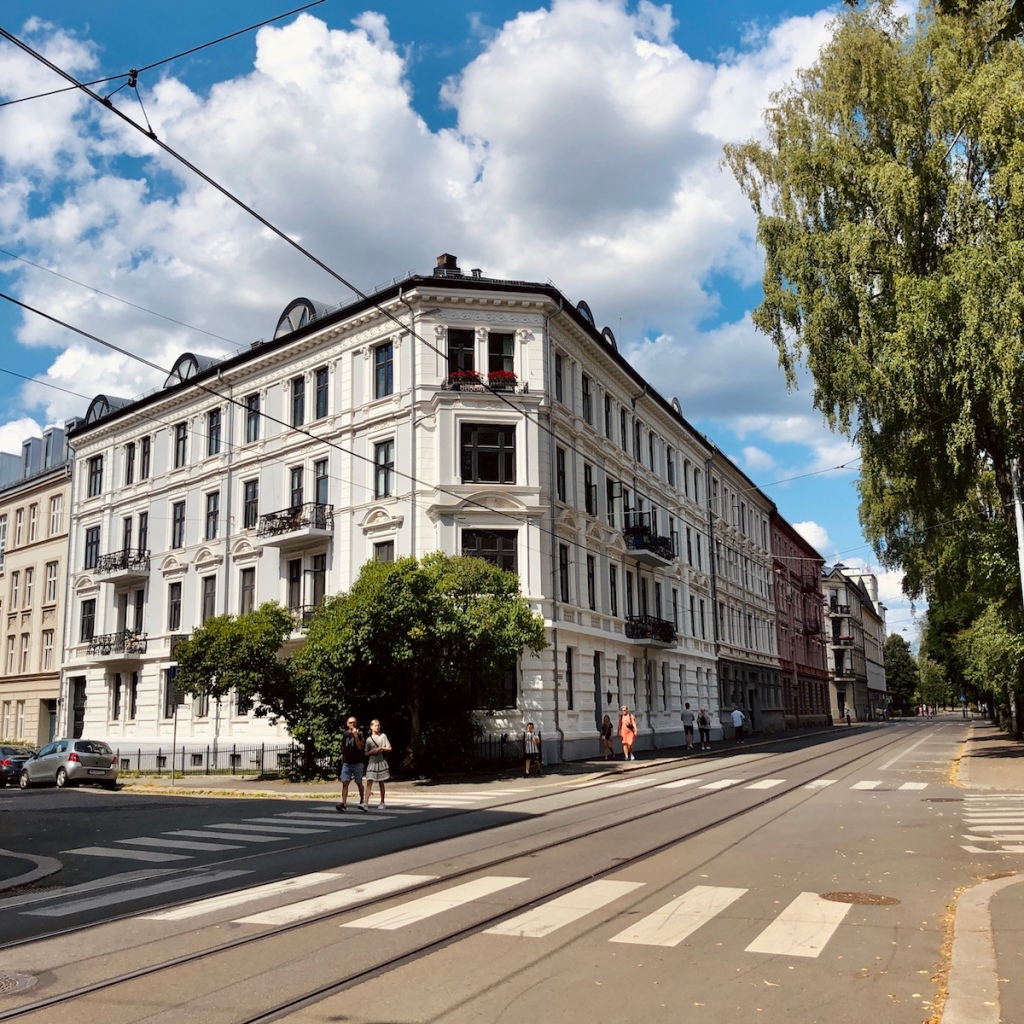

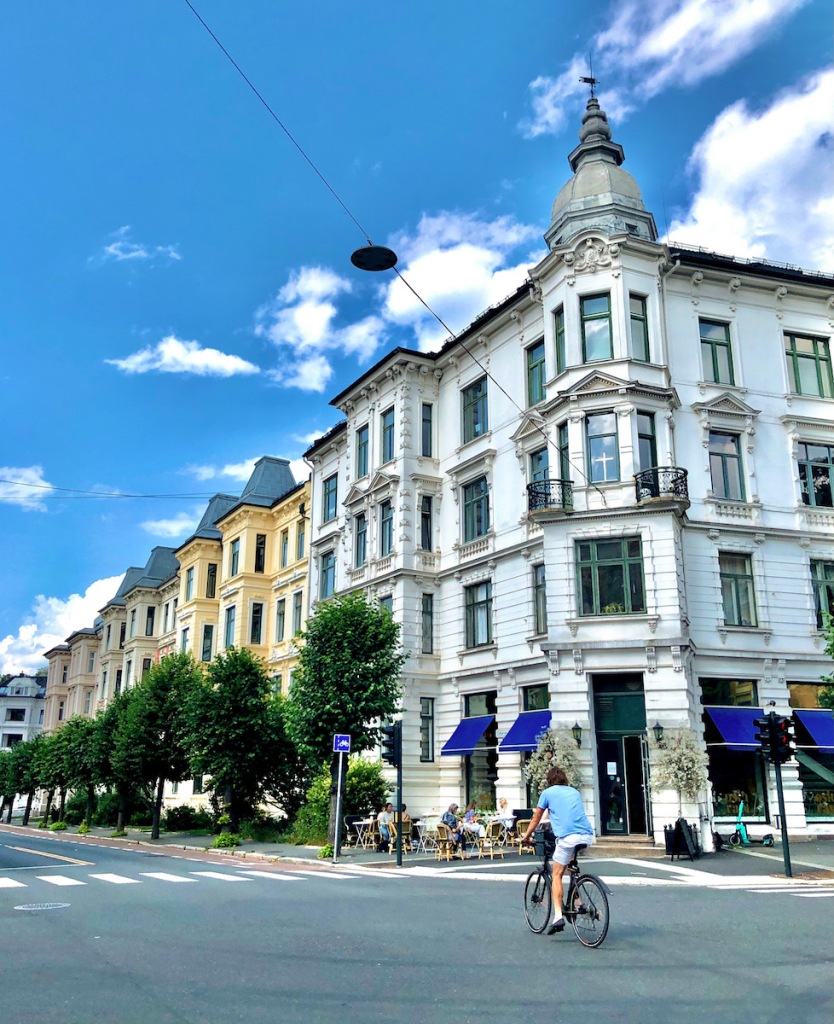

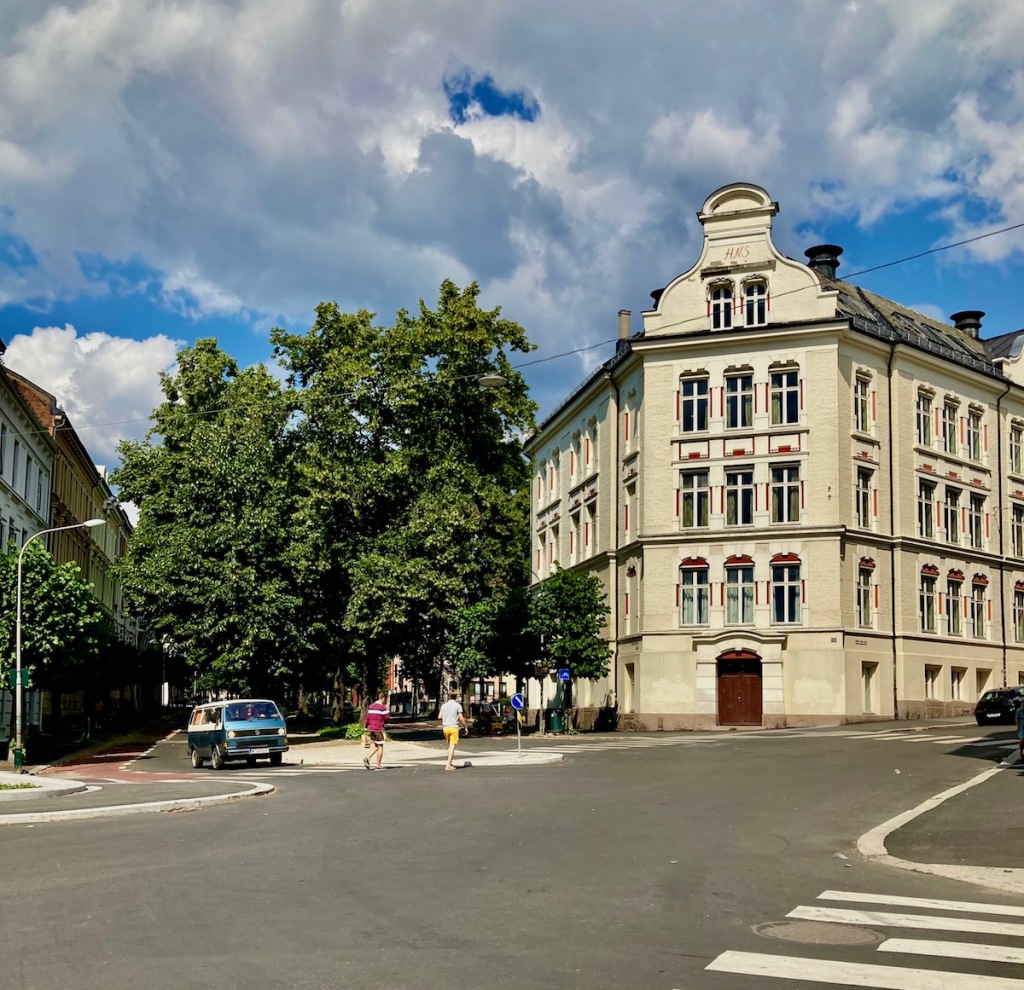

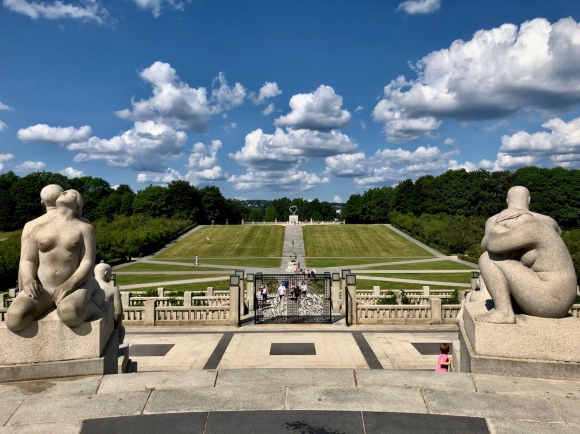



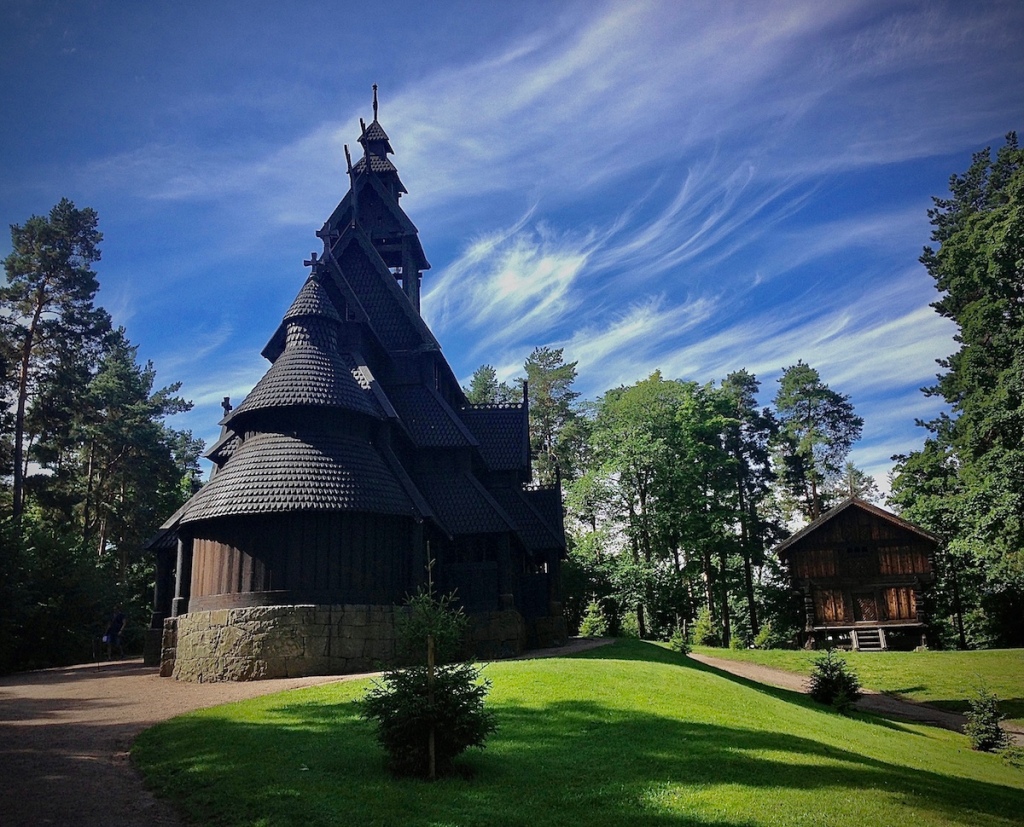

33 replies on “Oslo: our favorite areas”
Such a beautiful city and a wonderful write up.
LikeLiked by 1 person
Absolutely, it’s definitely an underrated city. Thank you, Paul!
LikeLiked by 1 person
So beautiful and bright. Thank you for the vitrual tour. Now I must visit i person. 🙂
LikeLiked by 1 person
Thank you! Oh yes, definitely do, it’s so worth a visit 😍
LikeLike
I visited Oslo when I was very young, I’d love to go back one day. Lovely blog xxx
LikeLiked by 1 person
I (Stephanie) grew up there, but it’s changed so much since I moved abroad! Definitely worth another trip.
LikeLiked by 1 person
Oslo has great architecture. Thanks for the tour.
LikeLiked by 1 person
It sure does! You’re welcome 😊 and thanks for your lovely comment!
LikeLiked by 1 person
Gosh, another gorgeous city! Was surprised at the modern opera house area, but of course we forget all old cities do have some modern areas. Your photography is wonderful! Thanks for all the pictures.
My Mother was a great fan of the Norwegian ice skater, Sonja Henie, so I am named after her 😊
LikeLiked by 1 person
Thank you Sonja! Modern Scandinavian architecture tends to be quite clean and minimalistic.
Ah yes, Sonja Henie is a legend. The queen of Norway is also named Sonja!
LikeLike
Oslo, and the country in general, is a place we want to see so bad. It seems so beautiful and peaceful and… straightforward haha. This is a great post
LikeLiked by 1 person
Thank you so much! Yes, we Norwegians are quite straightforward. But we’re very big on koselig (coziness) as wel!
LikeLike
That’s really cool y’all have a word for that whole feeling of coziness because I think everyone sort of knows that feeling but can’t really place it other than to just say “cozy.” Definitely want to visit there so bad!
LikeLiked by 1 person
Thank you for the tour! Your articles is beautifully written, as usual. I must save money to go to Oslo.
LikeLiked by 1 person
Thank you very much, Filipa!
LikeLiked by 1 person
Oslo is on my bucket list. Great post and information. Thanks!
LikeLiked by 1 person
Awesome! Hope the article can help you plan your bucket list Oslo trip😄
LikeLike
So beautiful! I’ve never been to Oslo but it’s on my bucket list!
LikeLiked by 1 person
Thank you so much! Hope this will inspire you to start planning your Oslo trip!
LikeLike
What an amazing tour of the city! The architecture is stunning. I always wanted to be the fjords but the modern buildings took my breath away.
LikeLiked by 1 person
Thank you so much! Yes, the fjords are absolutely worth a visit, but the Oslo area and the Oslo fjord are underrated. There’s so much to see, and the city has evolved so much in the last decade 😀
LikeLiked by 2 people
Looks beautiful and very charming. Great photos!
LikeLiked by 1 person
Thank you so much, JoAnn, glad we could show you around Oslo through our post!
LikeLiked by 1 person
[…] is a 4* boutique hotel ideally located in the very center of Oslo, in the former headquarters of the Norwegian America Line, whose legendary cruise ships transported […]
LikeLiked by 2 people
woww!! this looks gorgeous….
LikeLiked by 1 person
Thank you so much, Nandhana! Have a great day 😊
LikeLiked by 1 person
I love your photos they always sell me on all of these new places where I really want to visit, Oslo is now on my list, it looks like a very vibrant city and much more sunny 🌞 than I expected
LikeLiked by 1 person
It depends on the year, but there’s nothing like a lovely summer in Oslo. Perfect for us, who are most at ease around 20-25 degrees Celsius. The water is pretty warm as well thanks to the Gulf Stream: up to 20-21 degrees at the height of summer. Very refreshing!
LikeLike
[…] like Oslo and other major cities in Northern Europe, Stockholm has an understated reputation. Even so, this […]
LikeLike
I actually have a long layover in Oslo and look forward to exploring some of these places. Thank you for sharing ❤️
LikeLike
[…] Oslo […]
LikeLike
[…] Oslo […]
LikeLike
[…] Oslo […]
LikeLike